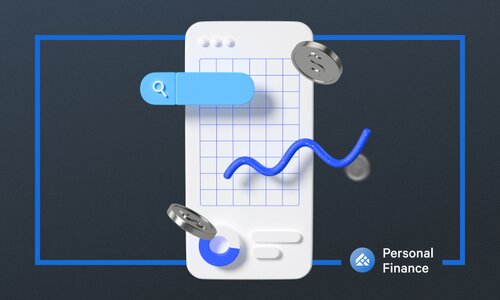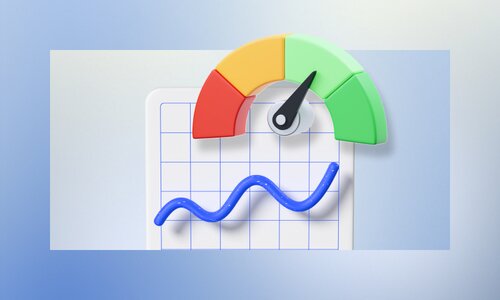Saving and investing can be a great way to build wealth. And you have a lot of options to help you get there.
The United States Congress designed the 401(k) plan to encourage Americans to save for retirement. It has primarily replaced pension plans, and since it’s an employer-sponsored retirement savings plan, the 401(k) is extremely common and very popular. The 401(k) offers significant tax benefits and gives you various options for allocating your funds.
Let’s dive deeper into what a 401(k) is and why it is worth considering.
What Is a 401(k) Plan?
A 401(k) is a retirement savings plan offered by many employers. It allows workers to sign up and have a percentage of each paycheck paid directly into an investment account.
When you open a 401(k) plan, you can put your money into certain investments, typically stocks and mutual funds. Your contributions, specified in advance as a percentage of your pay, are withdrawn directly from your paycheck and invested in your chosen funds. Companies will generally provide a list of available offerings for employees to choose from.
Their immediate tax savings make 401(k) plans popular among employees. You pay no tax for every dollar taken from your paycheck and put into the 401(k). Therefore, your current year’s tax bill will be lower the more you invest in your 401(k). You will, however, be taxed in later years when you withdraw from the 401(k) account.
How 401(k) Plans Work
Thanks to the power of compound interest, the money you put in your 401(k) when you’re young can grow exponentially over the years.
To start a 401(k) plan, you must do so through your employer. Many companies will offer employee 401(k) plans, and once you’re signed up, you can automate the process so that a percentage of your paycheck is put towards the plan each month without you even noticing. You can also ask for a list of stocks, bonds, and mutual funds the 401(k) can be invested in from the plan administrator. (You’ll want to choose ones that feel right for your long-term financial goals and risk tolerance.) The investment choices will differ for every employer’s plan.
If you’re self-employed or run a small business, don’t fret. You may be eligible for a solo 401(k) plan, also known as an independent 401(k), which gives you the same offerings as an employer-provided 401(k). These plans can be opened through financial providers, such as brokerages.
Employer Matching
Many companies will provide a 401(k) match, which means the employer will match employee contributions up to a certain percentage. For instance, an employer might match 50 cents for every dollar that an employee contributes, which means that if you’re putting in $1,000 a month towards your 401(k) each month, your employer will add another $500 in matching contributions, bringing your total monthly contribution to $1,500.
This employer contribution amount is free money on top of your paycheck that you don’t need to pay tax on until you withdraw the earnings in later years, and it can add up substantially over the long term. Financial advisors and experts recommend that you contribute at least enough money towards your 401(k) plan to get the full employer match.
Types of 401(k) Plans
There are two ways to contribute to a 401(k) plan, and it’s essential to understand the different tax implications of each investment option before you sign up.
Traditional 401(k)
A traditional 401(k) plan is employer-sponsored. The money comes out from your monthly paycheck and is automatically put in your 401(k) before any income taxes have been deducted. These pre-tax contributions reduce your taxable income and can be reported as tax deductions for the current year. You won’t owe any taxes on this money or the interest earned on it until you withdraw, typically in retirement.
Roth 401(k)
The Roth 401(k) works more like the Roth IRA or Individual Retirement Account, where the contributions are taken from after-tax dollars. Since this money has already been taxed, the funds in a Roth 401(k) grow tax-free. When they’re withdrawn during the later years of retirement, you aren’t required to pay any additional taxes on either the original contribution or the earnings.
Rolling your 401(k) over into an IRA is also possible. Still, you’ll need to follow Internal Revenue Service rules on rollovers, available at IRS.gov, and get investment advice to make sure you’re not losing money in taxes when you do so. A self-directed IRA can give you a much more comprehensive selection of investment choices.
Annual Contribution Limits
A 401(k) is a defined contribution plan; that is, both the employer and the employee can contribute to the account up to the limits set by the IRS.
In 2024, this limit is $23,000 per year for workers under 50, while anyone aged 50 and over could make a $6,500 catch-up contribution. The maximum contribution an employee or employer can make to a 401(k) plan in 2023 is $22,500 per year for workers under 50, and an additional $7,500 catch-up contribution available for anyone over 50.
If your employer offers both types of 401(k) plans, that is, a traditional 401(k) plan as well as a Roth 401(k), you can either choose one of the plans to put your money into or divide your contributions between the two. However, it’s important to note that the total contributions between the two types of accounts must not exceed the $22,500 limit for 2023.
Withdrawing funds from your 401(k)
The most important thing to remember about 401(k) withdrawals is that since this money was never taxed, you will owe ordinary income taxes on the original contribution and the growth when you take it out. If you have a Roth 401(k), the money has already been taxed, and you owe no tax.
For both traditional and Roth 401(k) plans, you must be at least 59½ years of age or meet additional IRS criteria (such as permanent disability) to withdraw from the plan without incurring a penalty. For early withdrawals, the withdrawal penalty is typically a 10% early distribution tax in addition to tax penalties.
Starting in 2024, plan participants can make a hardship withdrawal for emergency expenses of up to $1,000.
Additionally, once you reach 73, you will be subject to required minimum distributions or RMDs on traditional 401(k) accounts, which are mandatory withdrawals you must make, calculated based on your life expectancy at the time. Roth 401(k) plans are not subject to RMDs.
The bottom line
A 401(k) can be an excellent tool to start investing a portion of your income, not only because it allows you to put aside tax-deferred money before it’s even hit your account but because an employer match can give you free money that can add up substantially over time.
At Arrived, our mission is to provide financial freedom for everybody, and we do this by allowing you to purchase shares in profitable rental properties. Through our platform, you can purchase shares of rental properties for as little as $100 and start building a portfolio — and a rental income —today.








